Iceland is a great country to fly a drone. There are phenomenal landscapes, an incredible number of waterfalls, active volcanoes, moss-green canyons and areas that look like they are on the moon. All this predestines the country to capture the most beautiful panoramas with a drone. From a bird’s eye view, the already spectacular landscapes look even more amazing and you can capture sensational photos and videos.
But what drone laws apply in Iceland? Can I even legally bring my drone into Iceland? And what about the no-drone zones in the country? Is it even worth taking your drone to Iceland? I had informed myself in advance and inquired where it is allowed and where it is forbidden to fly. But I was also busy on site to operate my small DJI drone properly and was afraid of too much wind, too close trees or other things in the environment.
But since Iceland is too beautiful not to take your drone with you, I’ve summarized the current laws and regulations here and also have a few tips on flying drones in Iceland to make it easier for you.
- At the same time, however, a restriction applies: Drone laws can change regularly and also the local restrictions may be different than shown here. Please check if there are any special prohibitions in your country and if not, please ask again.
Which Drone for Iceland?
 Since most travel to Iceland by air, a small but powerful drone is useful. One that has many features, stays in the air for a long time, yet is neither heavy nor expensive.
Since most travel to Iceland by air, a small but powerful drone is useful. One that has many features, stays in the air for a long time, yet is neither heavy nor expensive.
I would recommend the new DJI Mini 2. It is the perfect travel drone, because it is lightweight (just under 242 grams with battery) and space-saving foldable, so it takes up little space in your luggage.
At the same time, it has a good range (up to 6 kilometers in FCC mode) and a realistic flight time of up to 17 minutes. This is perfect if you want to reach more distant destinations. Of course, you should always follow the local laws and rules. In addition, the DJI Mini 2 also has great flight modes included, so that the drone can follow you automatically (Follow-Me), or fly in a circle around you (Circle).
Also, a good gimbal is included so that the footage always stays totally steady and stabilized, no matter how excited you are flying around.
Drone Iceland: Laws and Rules
Drone laws in Iceland are similar to those in Europe and Germany and tend to be somewhat less restrictive than here. However, drone laws will converge as the EU Drone Regulation also comes into force in Iceland from 2021. This means that, in general, the same regulations will apply as in Germany.
The following Drone Laws from the EU Drone Regulation apply in Iceland:
| Maximum flight altitude | You may fly your drone maximum 120 meters above the ground. You may only fly higher on a model airfield or with a permit from the aviation authority. |
| Night flight ban | You are not allowed to fly your drone at night. Unless you have an exemption from the aviation authority. |
| Do not fly over residential areas. | Drones with cameras (and they all are, really) are not allowed to fly over residential areas. Unless you have the consent of all property owners. |
| Nature reserves are taboo. | Flights over nature reserves and also national parks are not permitted in order not to disturb the wildlife. |
| Distance to airports. | You must keep 1.5 km distance from the outer borders of airports |
| Maintaining a safe distance when flying | You must keep more than 100 meters lateral distance with your drone to: - Peoples gatherings - Locations of accidents or areas where the fire department or police are deployed - highways, federal highways, federal waterways and railroad tracks - Prisons & facilities of the Federal Armed Forces - Industrial plants, hospitals - Public facilities such as authorities, embassies, police stations, etc. |
| Flights only within visual range | You must be able to see your drone with your own eyes at all times, thus your maximum distance is limited. The only exception is if you have a so-called spotter with you. This spotter then stands at some distance from you and has the drone always in sight. He must be in contact with you all the time, e.g. via radio. |
| First-Person-View | First person view (FPV) flights are allowed for drones under 250 grams if you can see the drone through video goggles, for example. For drones over 250 grams, you need an additional spotter. |
| Minimum Age | The minimum age is 16 years. Exceptions possible for flights under supervision. |
The new drone laws are not scheduled to be implemented until later in 2021. However, it doesn’t hurt to comply with them now. Below is some more important info on flying a drone in Iceland.
Beim Klick wird Youtube.com aufgerufen (Datenschutzerklärung) | By clicking, Youtube.com opens (Privacy)
Do I have to register my Drone in Iceland?
Currently (August 2022) you only need to register your drone if you are operating it commercially. For private flights, you don’t have to (yet). When the EU Drone Regulation is fully implemented (probably end of 2021), you will have to register with the Icelandic Air Traffic Control beforehand, even for private flights:
- More info at: https://www.icetra.is/aviation/drones/
Do I need a Drone License in Iceland?
Currently (August 2021) not yet, but when the EU drone regulation is fully implemented, you will need a drone license for certain drones in Iceland. This will be the same as the one you already have in Germany.
Is the commercial use of Drones allowed in Iceland?
Yes it is. But you have to register with the Icelandic Air Traffic Control before your first flight:
- More info at: https://www.icetra.is/aviation/drones/
Is a Drone Insurance required in Iceland?
No, currently it is not necessary to have a drone insurance in Iceland. And if your drone insurance, which you have in Germany anyway, is also valid worldwide, then you have one problem less.
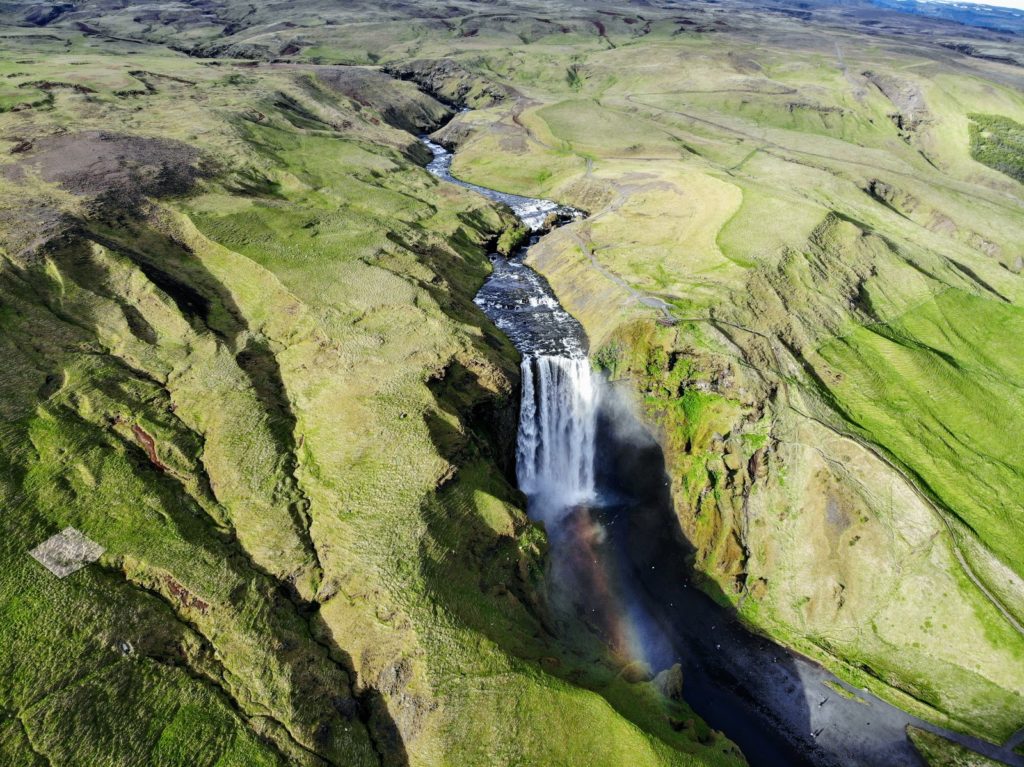
Do I need a Drone Sticker in Iceland?
Yes you need to put your name, address and phone number fireproof on the drone.
No-fly Zones at Iceland Sights
If you listen to the drone laws above, you would think you can actually fly around with your drone in most places in Iceland. But in addition to the legal requirements, individual local attractions naturally have their own regulations.
For example, it is generally forbidden to fly a drone at the hot spots in Iceland (Glacier Lagoon, Dettifoss, etc.). You will find “No Drone Zone” signs everywhere, prohibiting you from flying your drone in these places.
Drones in Iceland’s National Parks
It is unfortunately forbidden to fly your drone in all Icelandic national parks. You can find out which parks these are and which sights are located there below. However, it is often possible to ask the local ranger for an exception (e.g. at the Laki craters this is possible). Whether this is granted in individual cases is of course questionable.
No-Fly-Zones in Iceland
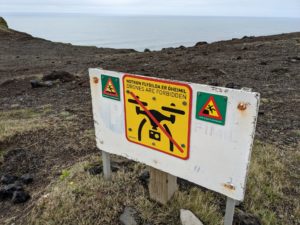 Very many sights are marked by signs as so-called No Drone Zones. The following list shows the most important sights where drone flying is prohibited.
Very many sights are marked by signs as so-called No Drone Zones. The following list shows the most important sights where drone flying is prohibited.
The following places in Iceland are so called No Drone Zones. This means that it is forbidden to fly your drone here.
- All national parks in Iceland (see also Wikipedia)
- Jökulsárgljúfur-Nationalpark (here lies. among other things the Dettifoss)
- Vatnajökull National Park (here you can find e.g. the glacier lagoon Jökulsárlón)
- Þingvellir National Park (at the Golden Circle)
- Snæfellsjökull National Park (located at the westernmost end of the Snæfellsnes peninsula)
- Laki Crater
- All nature reserves
- All coastal areas/cliffs where birds breed (e.g. at the Puffins in Látrabjarg)
- Askja crater
- Dettifoss
- Great Geyser
- Jökulsarlon glacier lagoon incl. Diamond Beach
- Látrabjarg cliffs (puffins)
- Seljalandsfoss
- Skogafoss
- Þórsmörk
To what extent these local regulations really apply as laws or whether these are simply indications, I can not answer of course. It is of course the case that many people do not abide by them and let their drone rise despite prohibition signs. Often the areas are so vast that drone pilots can retreat to more remote corners and you can’t even make out where the drone is actually coming from.
Where is Drone flying allowed in Iceland?
Even though the bans sound very strict and you might think, you can’t actually fly your drone anywhere in Iceland anymore. Almost 90% of the island is unregulated and there it is allowed to fly your drone. This includes the entire highlands in Iceland, the Westfjords, the Fjaðrárgljúfur Gorge and many coastlines and also some waterfalls.
Car Rental at the Iceland Specialist with Years of Know-How:
 Northbound.is
Northbound.is
- compares all Icelandic car rental providers
- specialized in Iceland roundtrips and the highlands
- specialized insurances for the rough Iceland available
- free cancellation up to 48h before start of rental period
- normal rental cars, campervans, motorhomes, SUV (also with roof tent) & off-road vehicles available
Find The Best Prices for Iceland Rental Cars at northbound.is*
Wind, Storm & Rain | How safe is Drone flying in Iceland?
No country we have traveled to has had such consistent and heavy storms. It was quite noticeable when there was no storm or at least no strong wind blowing. Of course, this is also exhausting for a drone, which is at the mercy of the wind at high altitude.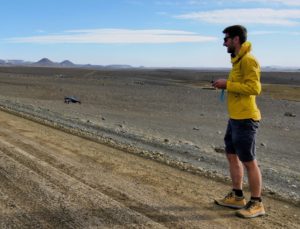
You should therefore pay close attention and in the worst case abort the flight or not even start. The weather can also change very quickly here. If the sun has been shining so far, it can start raining minutes later.
You should be prepared for this. Contrary to many people’s fears, the Earth’s magnetic system is not a problem here, even though Iceland is so much closer to the North Pole. So you won’t have any problems with the compass in your drone.
Flying Drones in Iceland | My Experiences
It’s up to you whether you follow the laws and rules in Iceland regarding the use of drones, or whether you fly anyway, even if it’s prohibited. In any case, you should respect other people (and their safety) and not fly too close over their heads. The same goes for animals in Iceland, of course.
Iceland is really a huge island and there are so many spectacular landscapes that there is hardly a place where you don’t want to unpack your drone. If you’re not at the hotspots or top sights, you won’t have any problems flying your drone.
Often it is enough to move a bit away from the sights (or no-drone zones) and then e.g. film a waterfall from a few hundred meters away. This usually looks better than starting directly in front of it.
But even if you (mistakenly) launch the drone in a national park, you will usually only be kindly advised by a ranger to please retrieve the drone. You do not have to fear legal consequences or even fines. Also, many tourists do not adhere to the applicable prohibitions and fly in places where it is prohibited.
For example, at the Jökulsárlón glacier lagoon you very often see drone pilots flying their drone over the huge icebergs. Since the area is very extensive, this is hardly noticeable, so that other tourists are not necessarily disturbed.
Drone on the Plane: Hand Luggage or Checked Luggage?
If you take the plane to Iceland, then you should adhere to the specifications of the airlines regarding the transport of drones. Actually, all airlines that allow drones on board stipulate that drones and especially the batteries belong in the hand luggage and may not be packed in the checked luggage or suitcase.
Apart from that, I would always recommend transporting valuables such as cameras, drones, etc., in your hand luggage anyway. Because checked baggage can be lost. But you always have your hand luggage with you!
If you want to be absolutely sure, then you should remove the batteries from the drone and this in so-called Lipo bags pack. These are special storage bags for lithium-ion batteries, which also protect the batteries from leakage and short circuits.
Do you have any questions about flying drones in Iceland or have you discovered any mistakes in my explanations? Then feel free to write me a comment.




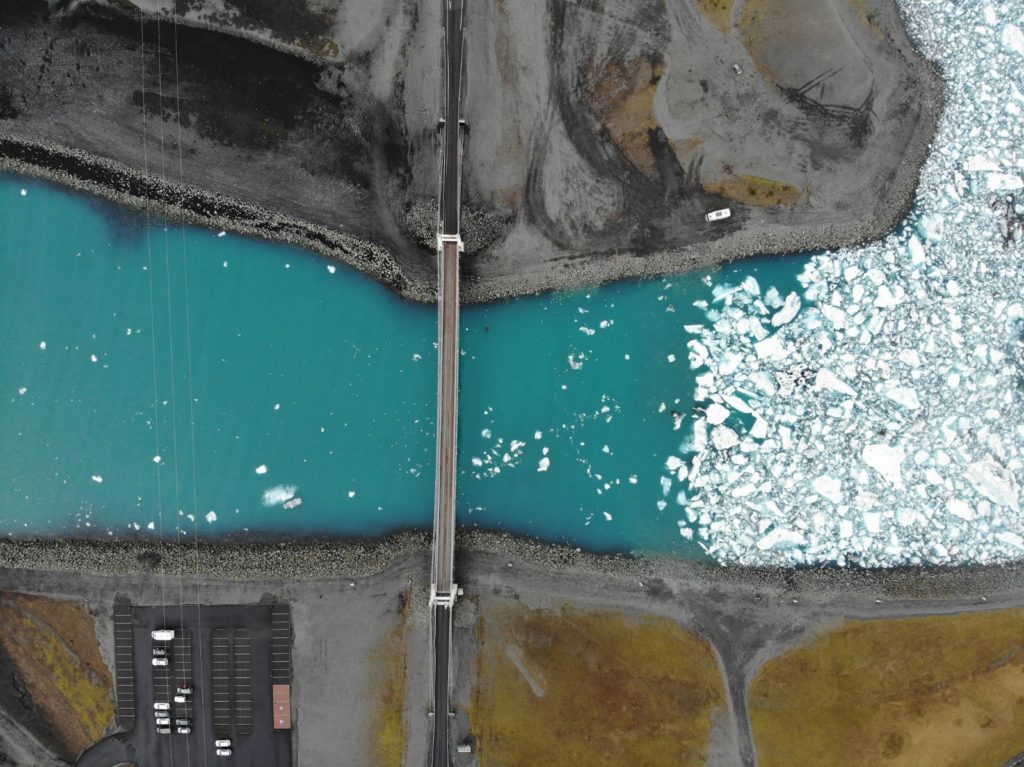

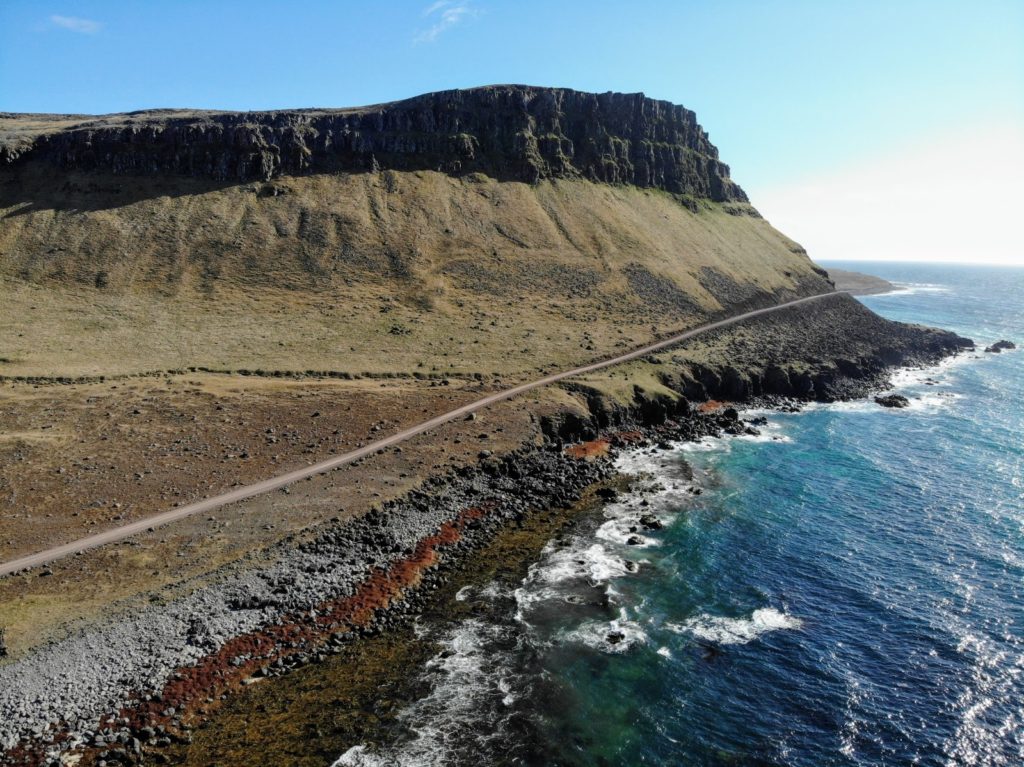
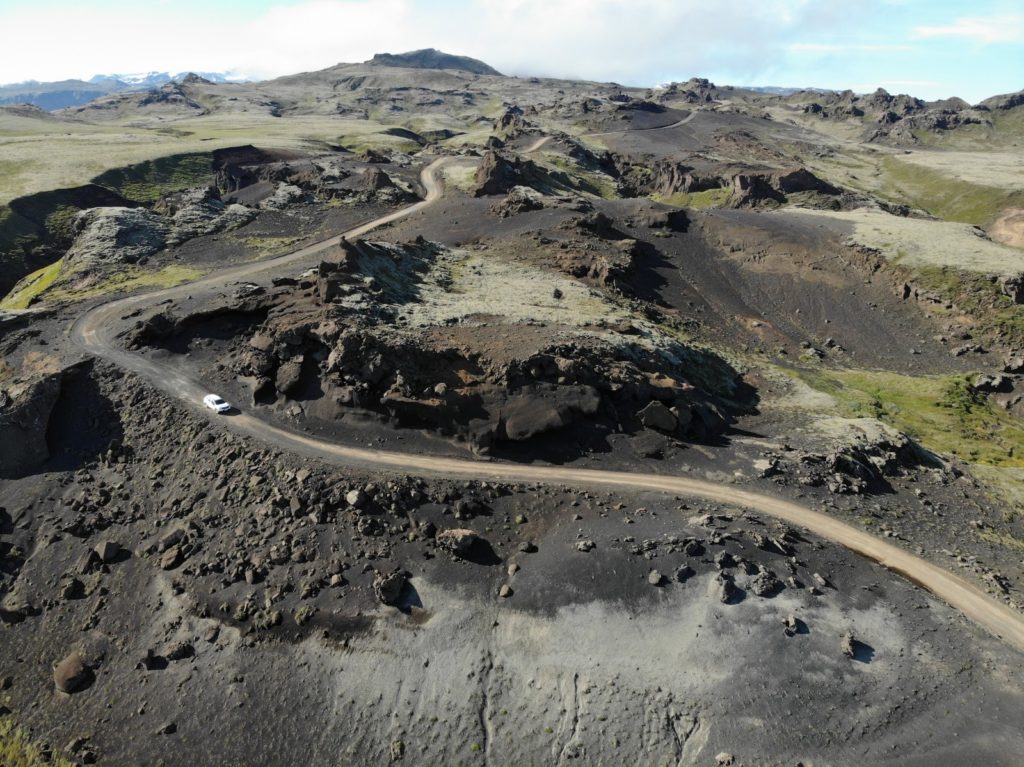
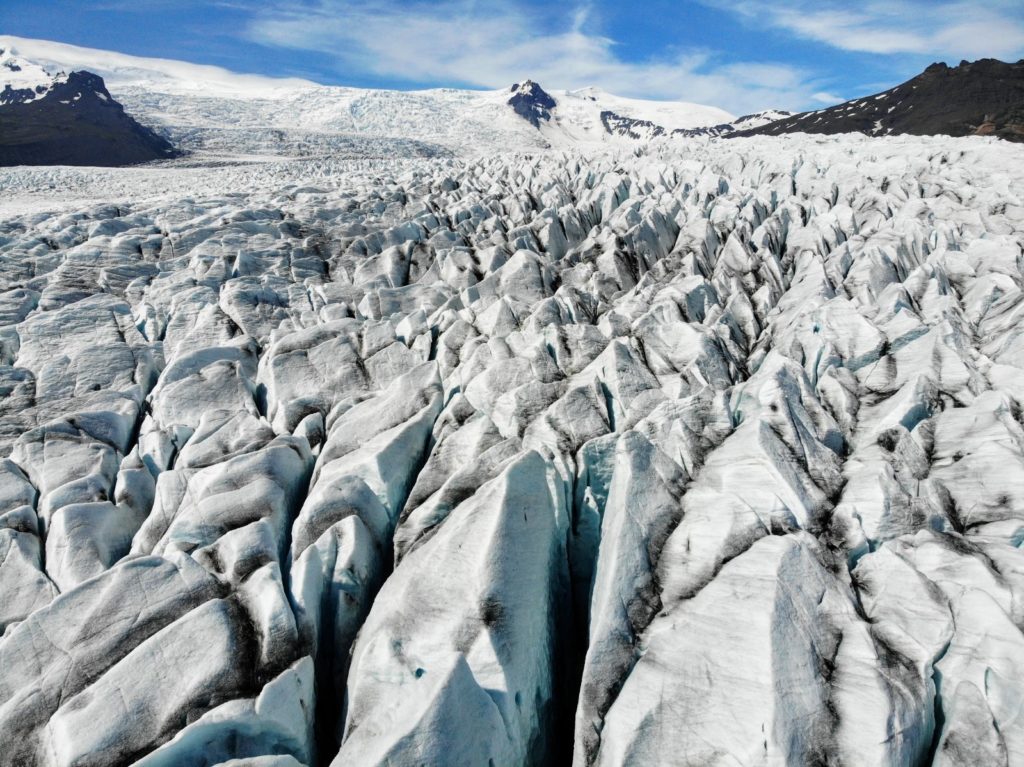
Hi,
Informative article.
If I bring my own drone, is it possible to purchase a 3rd paty insurance in Iceland?
Thanks
Hi Daniel,
You should purchase an insurance back at home thats valid worldwide. Thats the easiest way.
Best wishes
Andreas